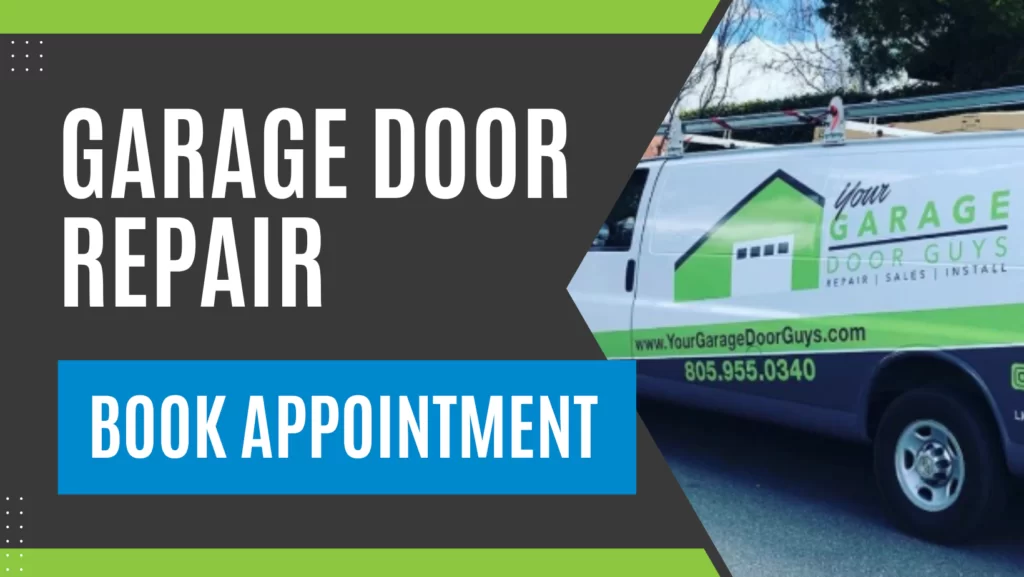If your garage door isn’t closing properly and there doesn’t seem to be anything tripping the sensor, you need to understand how to tell if garage door sensor is bad.
In this article, you will discover some of the most common issues that cause a garage door sensor malfunction.
Let’s get started …
How to Tell if Garage Door Sensor is Bad
It’s not always clear if a garage door sensor is bad, but there are a few common signs that indicate you have a malfunction.
Let’s start with the most obvious sign – your garage door doesn’t close properly. If you discover this problem, the sensor path is the first thing you should check, as any objects blocking the path will prevent the door from closing. This is a common garage door safety feature that prevents injury and damage to personal belongings. Other signs include flashing garage door opener lights, missing sensor light, or flashing sensor lights.
Okay, now that you know some of the common signs of garage door sensor malfunction, you’re ready for the next step – troubleshooting.
Here’s how to tell if garage door sensor is bad – five things to check:
- Sensor path
- Sensor power
- Sensor lenses
- Sensor moisture
- Sensor alignment
- Sensor wear & tear
Keep reading for more detail, starting with the first thing you should check.
1. Sensor path – Make sure nothing is obstructing the sensor beam
In general, garage door sensors block the door from closing if there is an object nearby.
This precaution ensures that the door doesn’t close when your car is in the doorway. The same mechanism kicks in when other objects are placed near the door too.
2. Sensor power – Reconnect the sensor to its power supply
A common cause of a malfunctioning garage door sensor is lack of power supply. Look for small LED lights on the sensors. If they’re turned on in both the sensors, then there is no issue with the power supply. If you find the lights turned off in one or both the sensors, it indicates that there is a problem in power supply.
3. Sensor lenses – Give sensor lenses a good cleaning
Sometimes, door sensor lenses can be covered in dirt. This happens when you don’t clean the lenses often, if you live close to an intersection or if there’s a lot of wind and pollution near your home. All this leads to the pile-up of dust on your lenses and it is likely to block the sensor from functioning properly.
4. Sensor moisture – Dry sensors if wet
Sometimes, wetness in and around the sensors is a possible cause of the malfunction. This is likely if your sensor was exposed to rain or water from the sprinkler system.
5. Sensor alignment – Make sure both sensors line up with each other
When both the sensors are misaligned, they will not work properly. Check if this is the cause by looking at the LED lights on both the sensors. You should use green lights, if this is not the cause. When you see red lights flashing one, or lights off in another, check for the alignment.
6. Sensor wear & tear – Check for damage
Sometimes, the problem can be due to normal wear and tear. This is especially true if you’ve been using the same sensor for more than ten years.
Now that we’ve seen the possible causes, let’s see how to troubleshoot them.
Related: 4 Common Garage Door Problems
Troubleshooting
Here are some simple troubleshooting options that should fix the problem for you.
- Check if there are any objects impeding the door. Sweep the garage floors and look through the sidings to ensure that there are no objects to obstruct the door.
- Since the lack of power supply is a common problem, check the wires around the sensor when the LED lights are not flashing. Many times, the malfunction can be due to a loose connection or broken wire. A good way to check for power connection is to check if other parts of the garage are getting power. This makes it easy for you to isolate the problem. If the cause is a poor power connection, open the box and check for connections, but make you exercise extra precaution. If you’re not sure where to get started, a professional can help. Get a 25-point garage door inspection to ensure your garage door is safe and working properly.
- Even if there are no evident signs of dust on your sensor’s lenses, it is still a good idea to wipe the lenses down with a dry, clean and lint-free cloth.
- Check if the alignment is proper, and adjust as needed to make sure they are both facing each other.
- Sometimes, wet patches around the sensors are the cause of the malfunction. If you notice any wetness, do nothing. Just allow the wetness to dry up and try opening your garage door. It should work now.
If none of these troubleshooting options work, look at the garage door sensor’s manual and see if there is anything in it that can help you to fix the issue.
Your final option is to get in touch with a garage door expert to fix the problem for you. Sometimes, the sensor may be beyond repair due to wear and tear, and in such a case, your best bet is to replace the garage door sensor with a new one.
The latest garage door sensors are technologically advanced and even allow you to control the opening and closing through an app on your smartphone. This is something to consider if you decide to replace your garage door sensor.
Professional Garage Door Repair
Experiencing issues with your garage door opener can be frustrating and inconvenient, disrupting your daily routine.
Your Garage Door Guys specializes in expert repair services for all types of garage door issues. Your Garage Door Guys provides garage door repair in Simi Valley, Thousand Oaks, Agoura Hills, Woodland Hills, and other areas throughout Conejo Valley and San Fernando Valley. See our service areas for more.



I have a red light on one sensor and a green light on the other. should they both be green? If aligning them make both lights green, or red?ED
Hi Edward,
The green light signifies your sensors have power while the red light signifies the sensors are aligned. If the red light is blinking, it means the sensors are not aligned and need adjusting.
My sensors are not getting much power compared to my other garage door. I replaced the board, but the board is still showing the sensors are not getting enough power. I do not see how new sensors will help? Any ideas?
I have sensors that are both reading green but the red light is not on at all. The door only closes if you hold the button until it closes. Should I assume the sensor is bad. Since power is going to the sensor lighting the green lights.
One sensor does not light. There is power to the opener but does not run -including light bulb in opener does not lite.
I find this article helpful because we just bought new garage doors. Since I want to be aware of the possible damage, it’s good that I stumbled upon this piece. You noted that I should check on the sensor path when my garage doors won’t close properly and assess if the alignment is in place. With these simple observation, I may be able to tell the problem right away to the garage door repair services.
I have a green light on one and yellow on the other, (liftmaster professional garage door opener
My garage Door goes up but I have to hold the button to make it go down. Any thoughts?
One sensor has a steady green light, the one has no light. It is a LiftMaster over 10 years old. How do I find Model Number to check for replacement sensor?
Thank you.
I can’t get the red light to come on even after aligning them
I have one sensor with a green light and one with a yellow light. What does that mean?
My garage door sensor red light is out but the green light is on, yet the garage door does not close. Do I need to buy a new sensor or do I simply need to adjust the alignment?